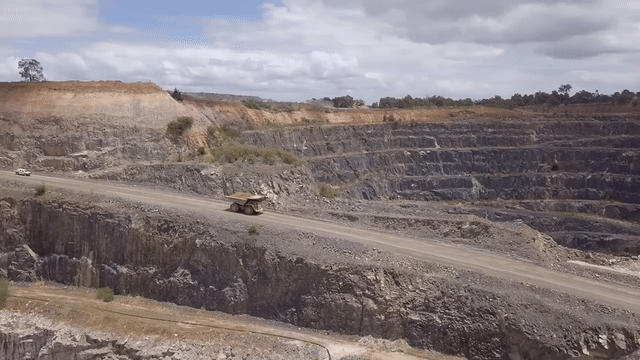Dust control is a significant concern in the mining industry, impacting health, safety, and operational efficiency. The importance of dust suppression cannot be overstated, as dust particles can cause severe respiratory issues, reduce visibility, and lead to costly equipment wear and tear.
To mitigate these risks and comply with stringent environmental regulations, mines invest heavily in dust control measures. But how much money do mines spend on dust control? This blog explores the financial implications, common methods, influencing factors, and the future of dust control in mining.
The financial burden of dust in mining operations extends beyond initial control measures. Here are some key areas where costs accumulate:
Maintenance Costs: Dust can accelerate wear and tear on machinery, leading to increased maintenance expenses. Regular cleaning and repairs are necessary to keep equipment functioning efficiently.
Regulatory Fines: Non-compliance with environmental regulations can result in hefty fines. Governments across the globe enforce strict dust emission standards, and failure to adhere to these can be financially crippling.
Health-Related Expenses: Dust exposure can lead to severe health issues such as silicosis and other respiratory diseases. Protecting workers' health not only avoids medical costs but also reduces downtime and increases productivity.
Common Dust Control Methods Used in Mines
Mines employ a variety of dust control methods to manage and mitigate dust emissions:
Water-based solutions: Spraying water on dusty surfaces is a common method. Water binds dust particles, preventing them from becoming airborne. However, this method requires a significant amount of water and frequent application.
Chemical suppressants: These are more effective than water alone and require less frequent application. Chemical suppressants create a crust on the surface, trapping dust particles.
Misting systems: High-pressure misting systems create fine water droplets that capture dust particles in the air, bringing them to the ground.
Mechanical solutions: These include installing dust extraction systems and using enclosed conveyor belts to reduce the spread of dust.
Advanced technologies: Innovations like fog cannons and foam sprays offer efficient dust suppression with minimal water usage.
Factors Affecting Dust Control Costs at Mine Sites
Several factors influence how much mines spend on dust control, including:
Mine Size: Larger mines typically have more extensive dust control needs, resulting in higher costs.
Location: Mines in arid regions may require more frequent dust suppression due to dry conditions. Additionally, remote locations may face higher logistics costs for transporting dust control materials.
Type of Material: Different materials produce varying levels of dust. For instance, coal mines often require more intensive dust control measures compared to metal mines.
Regulatory Environment: Mines operating in regions with stringent environmental regulations may need to invest more in dust control to ensure compliance.
Future of Dust Control in Mining: Real-time and Predictive Insights for Risk Management
The future of dust control in mining looks promising, with emerging technologies and best practices poised to reduce costs and improve efficiency. Innovations such as real-time monitoring systems, automated dust suppression, and environmentally friendly suppressants are gaining traction.
One such advancement is Envirosuite's Omnis Environmental Intelligence Solution. Omnis offers real-time monitoring and data-driven insights to optimise mining operations. By providing real-time and predictive information with smart alerting on dust levels, mines can adjust their dust control measures proactively, ensuring compliance and minimising costs.
The platform is providing predictive insights helping miners analyse scheduling plans and get operational lead team to minimise costly stoppages. Real-time monitoring in place at their mines can also validate any predictions.
Exploring Omnis Capabilities for Dust Control at Mine Sites
Omnis stands out in the realm of dust control. Here’s how it can benefit mining operations:
 An example work flow from Envirosuite's Omnis predictive dust management solution that helps operators gain operational lead time to plan ahead for high risk period and maximise productivity.
An example work flow from Envirosuite's Omnis predictive dust management solution that helps operators gain operational lead time to plan ahead for high risk period and maximise productivity.
Other benefits Omnis brings to dust control at mining:
Real-Time Monitoring: Omnis provides continuous real-time data on dust levels, allowing for immediate action when thresholds are breached.
Data-Driven Insights: The platform leverages advanced analytics to offer insights on dust patterns, helping mines optimise their control strategies.
Cost Efficiency: By enabling proactive adjustments based on real-time data, Omnis helps reduce unnecessary application of dust suppressants, thus saving costs.
Environmental Compliance: Ensuring adherence to environmental regulations becomes easier with accurate, up-to-date information on dust emissions.
Dust control is an essential aspect of mining operations, with significant financial implications. Understanding how much money mines spend on dust control involves considering maintenance costs, regulatory fines, and health-related expenses. Investing in advanced solutions like Omnis not only optimizes dust control efforts but also fosters a culture of innovation and environmental stewardship within the mining industry. By employing various dust control methods and leveraging advanced technologies like Envirosuite's Omnis, mines can enhance efficiency, ensure compliance, and reduce costs.
Watch this video to find out how to stop dust in its tracks with Omnis

